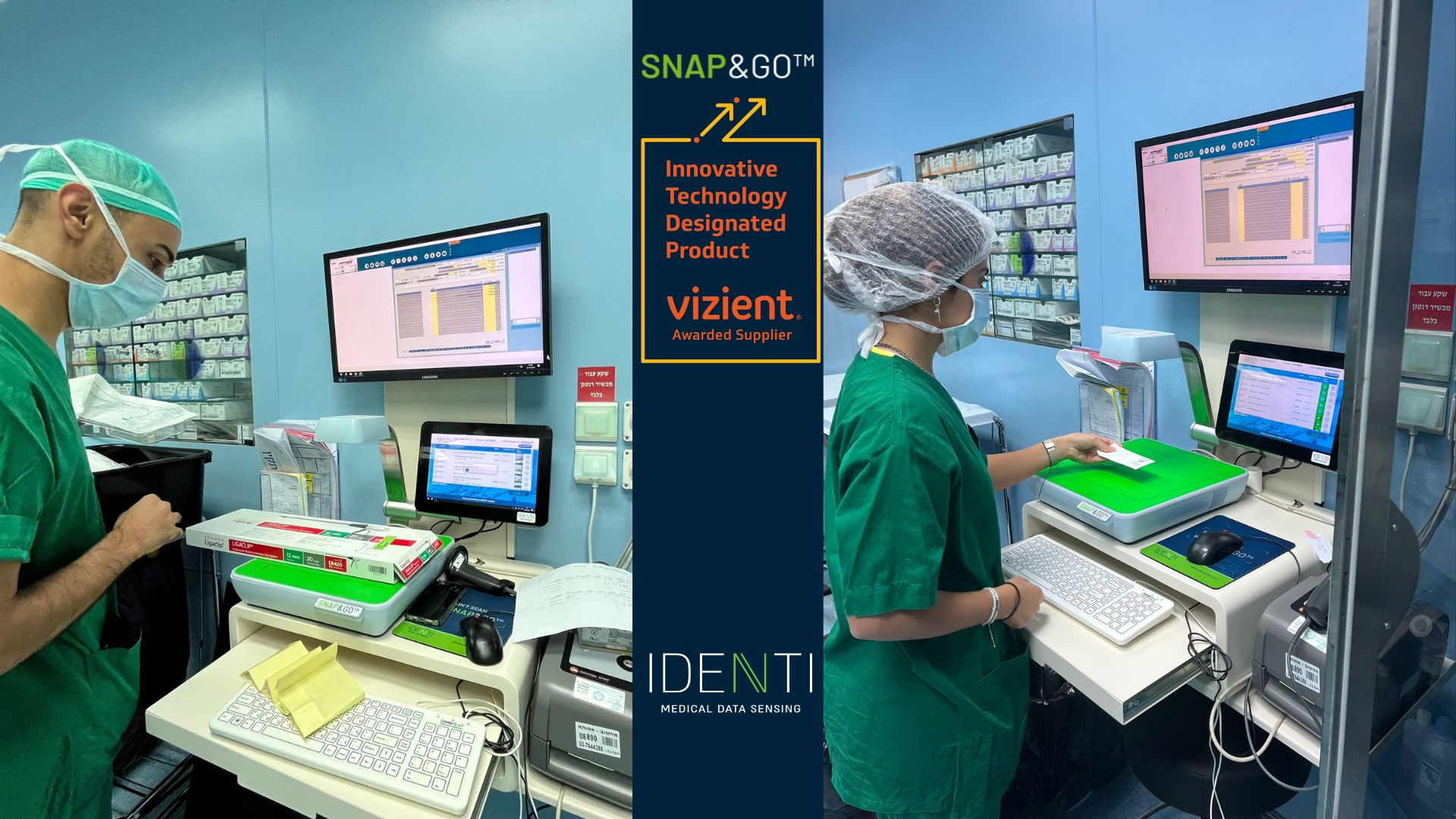What’s inside:
This blog highlights how accurately recording product usage in surgery within the electronic health record (EHR), is essential for effective healthcare revenue cycle management (RCM).
We speak to Pam Turner, a former Director of Perioperative Services, to get her view on the challenges of OR surgical supply capture, and the new technology that can address these issues.
We’ll cover:
- The challenges of surgical supply documentation
- Post surgery activity to reconcile the EHR
- The problem with traditional point of use systems for recording surgical supply utilization
- The benefit of capturing full surgical supply data in OR
- Efficient RCM using a surgical supply documentation tool powered by computer vision
- Making supply chain responsibilities easier for perioperative nurses
So, how ‘RCM-ready’ are your surgical supply records directly after surgery?
Revenue cycle management requires complete and correct item and charge capture in order to run smoothly. If every consumed product is correctly documented in the patient file, then the reward will be timely and accurate medical billing, with fewer denials and optimized reimbursement.
The problem is that capturing, identifying and documenting surgical utilization and charge capture is not as easy as it seems.
Despite the use of automated systems, many items often go undocumented, leaving the electronic health record incomplete post-surgery.
Hospitals and ambulatory care providers often organize post-surgery product usage documentation and may hold internal audit and reconciliation sessions, in order to make corrections and additions to recorded data.
But it’s a lot of work.
And some providers are growing tired of jumping through hoops to ensure that all the products consumed during surgery are included in medical billing.
Post surgery record reconciliation for RCM accuracy
We recently interviewed Pam Turner, former Director of Perioperative Services, to delve into the challenges of perioperative documentation and how the absence of crucial supply utilization data directly impacts revenue reconciliation.
Pam spoke about the complexities of ensuring the patient file was complete and correct in terms of surgical supply item and charge capture. This is how the issue was managed in her Trauma Center.
“As an administrative team it was the Chief of Surgery, myself, the CNO, the CFO, and we also had the Director of Finance. We would get together about once a month to go over where we were with our charge captures. So, we’d review the charges that had been placed out, the monies that we’d received back, and where there was a little bit of deficit that we needed to focus on, to get it to the next step.”
“Most insurance companies don’t pay between 90 and 120 days out, so you’ve got a lot of capital that’s going through here, and you want to be able to justify the charges that are being dropped.”
“Sometimes the charges are automatically done by the computer but it’s not until Finance looks at it and sees that there’s information omitted, and that we need to go back and plug that information in. That’s another time-consuming task, because I don’t have a lot of ‘fluff in the administration and the operating room, so a lot of it has to be done by myself in order for that to be complete – so everything else is on hold while I complete that task. It could take hours, sometimes days, to get the appropriate information in the chart.”
We can see that the lack of complete and correct charge capture at the point of care resulted in a small team of senior staff having to spend time reviewing cases, reconciling data and updating records. All of this comes at a cost in terms of workload, and capacity.
The problem with traditional point of use systems for recording surgical supply utilization
We asked Pam to describe the challenges that staff face when documenting product utilization into the patient chart, in the EHR.
“The charging of products can be very labor–intensive. Not all products are in the charge master. Anything that is not must be manually typed into the EMR. In some cases, this could be a bag full of product information that needs to be plugged into the system. Full item information such as product name, description, item expiration date, how many of the product were used – for every single item. It takes time.”
System limitations, in terms of charge capture storage capacity, an out of data item master, and inefficient data capture tool, regularly drive surgical supply documentation into a lengthy, manual process.
It seems that the complexity of operating room and procedural room settings, combined with the broad range of inventory now used during procedures, is proving too challenging for traditional technology.
We regularly hear back from nurses that their biggest documentation frustration is that the hospital simply doesn’t have all the items used in surgery loaded into the system.
One reason for this is that the charge master is full to capacity. This results in nurses making ‘one-time’ entries for the same items, over and over again, as they never end up stored in the system.
Another reason may be that the item is in the charge master, but the product code has changed and when scanned, or keyed into the system, the item can’t find a match in the hospital’s ‘source of truth’.
Because nurses need to focus on supporting the clinical team and caring for the patient, when product usage documentation fails, particularly during emergency and trauma cases, then it will likely not be recorded at all during the surgery.
We can see why many healthcare providers have put supplementary documentation systems in place in order to ‘catch’ lost charges.

Surgical supply insight – the benefit of capturing full surgical supply data in OR
The EHR needs to have full item data stored in the patient file: product name, description, reference, batch number, lot number, expiration date and more.
Missing OR surgical utilization data is an issue for many reasons. When full and correct utilization data is recorded it:
- Ensures optimal revenue capture.
- Optimizes patient safety via accurate patient records and robust recall management.
- Achieves full regulatory compliance, eg. UDI
- Enables the meeting of external audit requirements, eg. Joint Commission
- Facilitates demand-led procurement, based on actual usage.
- Results in smarter, streamlined inventory management
- Produces data metrics, reports and insights that help day-to-day operational management
- Underpins future forecasting and planning by identifying utilization trends, and by making data-driven predictions.

If traditional point-of-use systems are proving to be inadequate and do not result in the automated documentation of every product used in surgery, then, rather than compensate for this with time-consuming post-surgery admin, wouldn’t it be better to simply upgrade the point-of-use technology?
Efficient RCM using a surgical supply documentation tool powered by computer vision
We can see that traditional barcode and data entry systems are inefficient and do not result in the routine, automated documentation of every reportable, chargeable item during the surgery.
We have learned that the local item master, if not continually maintained, can be a barrier to item recognition and documentation.
A new approach is needed, one that caters for the complexities of the surgical setting and can cope with a vast variety of inventory.
New technology and a unique approach have resulted in the development of a new method of OR surgical supply data collection.
Image recognition, powered by AI and machine learning, and tapping into a global SKU database, is proving to be a gamechanger.
Finally, technology that is able to record every single item used in surgery, whether it is:
- Owned or consigned inventory
- A stock item or bill-only product
- In packaging that contains a barcode, or not
- A small consumable such as a loose nut, bolt or screw

Making supply chain responsibilities easier for perioperative nurses
Pam Taylor, the Director of Perioperative Services we spoke to, has seen firsthand, the power of image recognition technology.
“If we can capture all of the information that is necessary for the case, as well as for implants, as well as for recalls, it’s a win-win situation… you’ve got your OR financial revenue being done immediately, and what a better way – instead of having a nurse typing that in one product at a time – the nurse can place the item under the camera and see it zoom through the system. The screen will display all the product information -it’s got the product name, the product information, it’s got the serial number, the reference number, the company, and the expiration date. All in 3 seconds… if I needed to do a recall, I would just have to type it in, and it would come right back to me as a report – it’s a very simple process.”
When asked how easy Snap&Go is for the circulating nurse to use, Pam replied:
“All the perioperative nurse needs to do is place each consumed product under the camera and wait until the light turns green. Then they just remove the product, and the screen is already displaying all the product details. It assures us that the product has been placed into the chart.
There is no way on earth that you could spend 3 seconds putting product information into an EMR. It just can cannot be done.”
A vital element of OR revenue cycle management is the collection of supply utilization data from the point of care.
Easy point-of-use systems and workflows ensure full and correct surgical supply documentation. And this is the foundation of prompt, optimized claim submissions and reimbursement.
Snap&Go is breakthrough technology that has been recognized for it’s innovation.
In 2022 Snap&Go was awarded the Frost & Sullivan New Product Innovation Award, and this year it was awarded Vizient Innovation Technology Designation.
Take a look at the interview with Pam Turner.
Snap&Go makes the task of surgical supply documentation quick, simple and accurate.
If you want to simplify your OR RCM workflows, talk to us about an easy-to-integrate tool that will add speed and accuracy to your documentation of product usage in surgery.
IDENTI’s range of automated inventory management solutions is the innovation you need to reduce healthcare costs and optimize profits.






